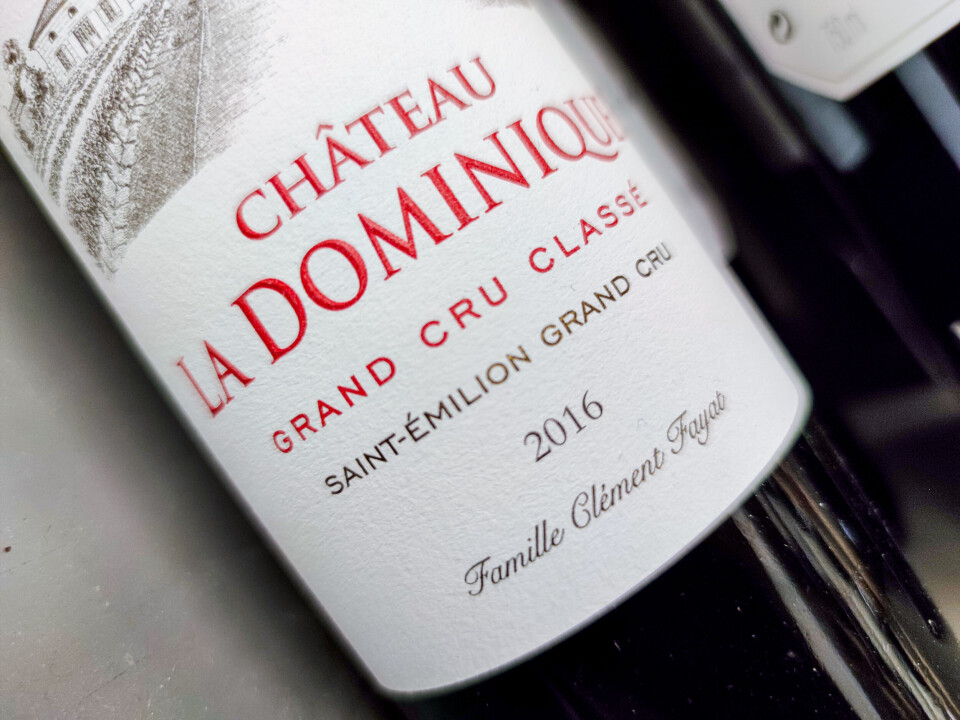-
How to order wine in a French restaurant
Ensure a stress-free dining experience by understanding wine lists and navigating sommelier advice
-
Duck Cold! Four French phrases to use when it is freezing outside
We remind you of French expressions to use to describe the drop in temperature
-
When and why do we say le moral dans les chaussettes?
We explore this useful expression that describes low spirits
How to read French wine labels - Château, Chablis and chardonnay
We explain French winemaking terms like ‘négociants’ and ‘récoltant’ plus how to spot useful information rather than marketing spin

In previous articles I’ve tried to explain how a knowledge of French wine regions and the styles of wines made here is pretty much essential when trying to choose wine in France, whether in a shop or a restaurant. This month I am going to write about other information which we may find on the label to give us clues about the wine.
Read more: AOP or IGP, doux or liquoreux…How to interpret French wine labels
A lot of people tell me they choose wines by looking at the alcohol percentage. Personally I think this is pointless unless you know the best range for each region and style of wine, or you have concerns about alcohol intake. A good red wine from Roussillon needs to be at least 13.5% but a good wine from Chablis should be under 13.5%.
The words “Contains Sulfites” are equally useless because all wine contains some sulfites, even organic and natural wines made without any sulfite additions. Recently wine producers have been obliged to state whether proteins from milk or eggs had been used to soften the tannins, as these are considered allergens for some people.
Read more: Explained: Sulphites in French wine
If you are not allergic to dairy, I would advise ignoring the warning, as milk and eggs have been used for centuries for some of the most prestigious wines in France and are probably more gentle than other fining additions, such as gelatine.
Understanding the French terms
The marketing experts have worked out that people buy wines which have certain words on the label, for example “Prestige”, “Château” or “Vieilles Vignes”, even though none have any legal definition. The term “Mis en Bouteille au Château” simply means that the wine was bottled at the property of the producer, rather than at a bottling plant.
The grapes and the wine could have come from somewhere else. Négociants who want to differentiate from the bulk-wine merchants may term themselves “Négociant-Eléveur”, meaning that they have aged and blended the wines themselves. Estate-producers often identify themselves as “Vignerons Indépendants” using the logo of the association.
Wineries making more hand-crafted wine may call themselves an “Artisan Vigneron” whereas a cooperative will often say “Les Vignerons de...” followed by the village name.
A medal does not always mean a winner
The year on the bottle is the year the grapes were picked, not the year it was bottled. The information is only really of use if you know whether that year was a good or bad one for the region in question and how long you should keep the wine before drinking it.
Read more: Bordeaux producer sentenced to prison for wine mixing and label fraud
Far more useful is the code on the capsule, which does actually tell us whether the wine is an estate wine, in which case the code on the top of the capsule is “R” for récoltant, or a négociant wine made from bought-in grapes or bulk wine, in which case the code is “N” or “E”.
The label may include logos to certify the wine is organic, biodynamic, environmental, vegan-friendly or that the producer is a member of some association. Some producers incorporate their competition medals into the label and some unscrupulous producers display what looks like a medal but isn’t.
Some bottles may have a back-label which gives useful additional information such as serving temperature and suggested food matches. However, producers often use that space to tell their story, sometimes interesting, sometimes fictional, to convince you to buy the wine.
A good label can sell the wine
Finally, the style and look of the label is important and the subject of millions of Euros in market research. For example, there was a trend in the 2000s for New World “Critter” wines which used images and names of animals. In France we often see labels targeted towards certain categories of consumer.
For example, traditional wines will aim at older, more conservative consumers using a sketch of a château or old-fashioned script. Natural wines aimed at young, hipster wine enthusiasts will often go for witty (sometimes rude) names with comic-book graphics.
Producers from less prestigious regions who want to make their wines appear prestigious often choose minimalist, elegantly designed labels, putting the legally-required information, even the AOP, on the back label. Mass-market wines usually try to combine a classic look with strong corporate branding but having a jokey label like “Vin de Merde” will sell a lot of bottles, even if each person only buys it once.
Spot the clues
Wine labels are confusing. Wine is a confusing and diverse product with a huge price range. Producers want to make their wines appear as prestigious and appealing as possible, sometimes using quite devious means. While knowing the location, style and reputation of every AOP along with the best producers would obviously be very useful, it’s not humanly possible.
No matter how much knowledge or information we have, we still have to take a gamble. But the more knowledge you have and the more you can interpret clues on the label, the better chance you have of choosing a wine that you will enjoy and is worth the money you spend.
Jonathan Hesford has a Postgraduate Diploma in Viticulture and Oenology from Lincoln University, New Zealand and is the owner, vigneron and winemaker of Domaine Treloar in the Roussillon. www.domainetreloar.com
Related articles
Upset over call to label wine nutritionally ‘unhealthy’ in France
Winery in France offers bottle refill scheme to cut carbon footprint
French wine trade court case shows complexities of classification
























